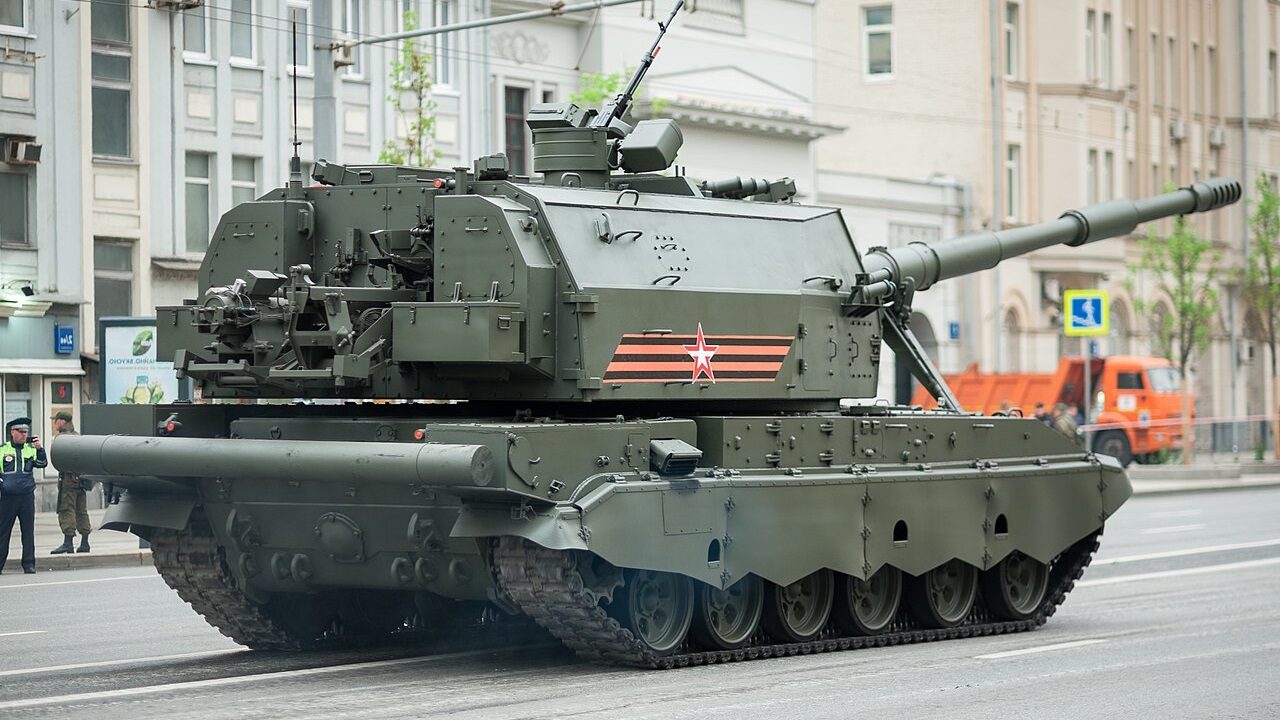Russia is Leaning into One of its Traditional Strengths in Donbas – Artillery – By nature of its vast geography, Russia has always primarily been a land power. In keeping with that focus, the various militaries operated by a succession of governments who have held power in St. Petersburg and Moscow built a uniquely strong understanding and reliance on artillery. This has carried over into Russia’s ongoing invasion of Ukraine, in which current fighting centered around Donbas has seen heavy employment of Russian long-range fires to support gradual Russian advance there.
History of Russian Artillery
The long history of Russian artillery can be traced all the way back to the 18th century, when military leaders such as Field Marshal Peter Shuvalov and Peter the Great placed high premiums on the production and employment of heavy artillery. This emphasis continued into the 19th and 20th centuries, when Russian troops made early use of indirect artillery fire in the 1905 Russo-Japanese War, despite a host of separate failures of tactics and strategy in that conflict by Russia. In the Russian Civil War, Bolshevik forces made significant use of artillery in their fight against White forces. The Soviet military’s artillery forces were a significant point of pride in the Second World War. This arsenal was used to significant effect up through the final capture of Berlin, which saw 3 million shells fired into the city by Soviet forces. Soviet leader Joseph Stalin himself referred to artillery as the “God of War” for its role in the Soviet Union’s victory over Nazi Germany.
Since the breakup of the Soviet Union, such firepower has remained a preferred tool of Russia’s ground forces. In what would be the Russian Ground Forces’ first intense conflicts in the post-Soviet era, the First and Second Chechen Wars saw Russian ground forces put significant stock into artillery fire to achieve decisive battlefield results, but analysis of these employments of artillery showed that they had a very mixed record of battlefield success.
Russia’s Artillery in the Lead-Up to War
On the eve of Russia’s invasion of Ukraine in February 2022, Russian forces possessed a potent mix of models, including multiple-launch rockets systems (MLRS), self-propelled artillery, and thermobaric artillery systems. Its most common and modern MLRS artillery systems are the 9A52-4 “Tornado” and BM-30 “Smerch,” which are themselves descendants of the older and better-known BM-21 “Grad” and “Katyusha” systems of Soviet vintage. Mainstays of Russia’s self-propelled artillery arsenal include the 2S3 Akatsiya, 2S1 Gvozdika, and the more modern 2S35 Koalitsiya-SV. The TOS-1 “Buratino” and its TOS-2 variant are powerful thermobaric MLRS systems are some of the most fearsome weapons in Russian service today. Russia’s 9K720 “Iskander” short-range ballistic missile system have been deployed in support of Moscow’s invasion of Ukraine, supplementing Russia’s significant artillery arsenal.
Russian Artillery in the Invasion of Ukraine
Russian artillery has featured prominently in Russia’s invasion of Ukraine practically since Russian commanders realized their initial (scattered and unsupported) blitzkrieg plan to topple the Ukrainian government had undeniably failed. Now that the Russian military has shifted its attention to more-conventional operations in Ukraine, its tempo of artillery bombardment has reached tempos unprecedented thus far in the invasion. Recent estimates claim that Russia is firing as many as 50,000 artillery rounds per day at targets in Donbas and the rest of Ukraine, which are answered by only 5,000 to 6,000 Ukrainian rounds in return. This imbalance has driven pleas in the West and by Kyiv itself to supply the Ukrainian Armed Forces with enough artillery to keep pace with Russia, or at least challenge its primacy in the field. For its part, Russia’s massive artillery campaign in Ukraine drives home how critical industrial capacity is to build up reserves of artillery ammunition needed to sustain modern warfare. Russia appears to be comfortable expending ammunition at its present rate, although we on the outside lack any verifiable or even claimed Russian stockpile figures.
As Russia’s invasion of Ukraine drags on and it continues to make incremental gains in Ukraine’s Donbas region, the role of such big guns in Russian tactics and strategy can only remain constant in the short to medium term. However, time will tell whether Russian stockpiles and industrial capacity can sustain the high tempo of use that Russian reliance on artillery requires.
Wesley Culp is a Research Fellow at the Center for the Study of the Presidency and Congress. He regularly writes on Russian and Eurasian leadership and national security topics and has been published in The Hill as well as in the Diplomatic Courier. He can be found on Twitter @WesleyJCulp.

